Tilicho Peak Expedition
The Tilicho Peak Expedition is a challenging mountaineering adventure in Nepal. Tilicho Peak, standing at an elevation of 7,134 meters (23,405 feet), is located in the Annapurna region of the Himalayas. It offers a thrilling and technically demanding climb, attracting experienced mountaineers from around the world.
The expedition typically starts with a scenic trek from Kathmandu, passing through beautiful landscapes, traditional villages, and lush forests. As the journey progresses, trekkers gradually gain altitude, acclimatizing to the thinning air. The trail leads to Tilicho Lake, one of the highest lakes in the world, renowned for its stunning beauty and tranquil atmosphere.
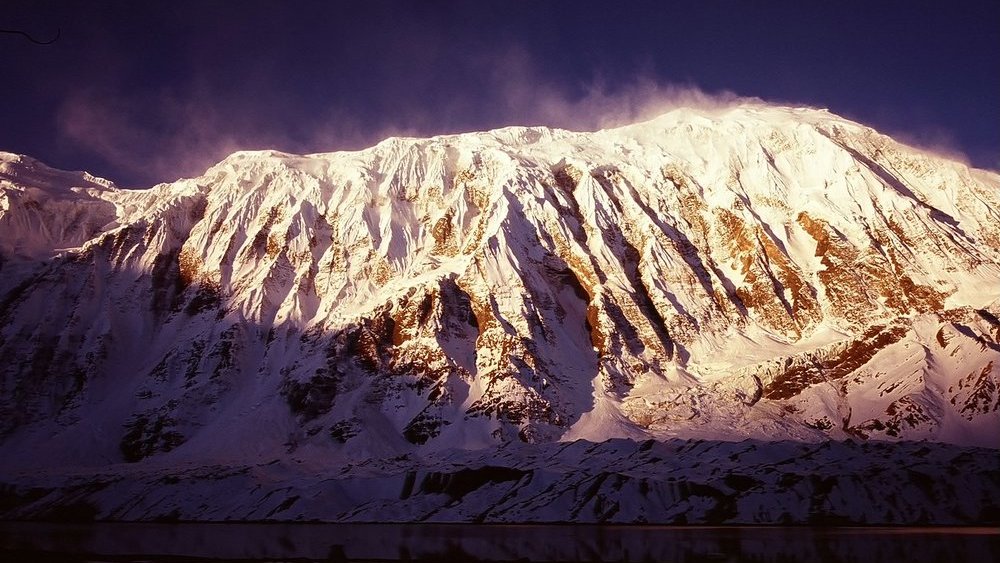
From Tilicho Lake, the climbing phase of the expedition begins. This involves navigating through challenging terrain, including steep slopes, icy glaciers, and rocky sections. The ascent requires the use of mountaineering equipment like crampons, ice axes, and ropes. Climbers face technical challenges and must exercise caution and proper climbing techniques.
Reaching the summit of Tilicho Peak is a moment of great accomplishment, offering breathtaking panoramic views of the surrounding Himalayan peaks, including Annapurna I, II, III, and Gangapurna. The sense of achievement and the awe-inspiring vistas make the Tilicho Peak Expedition a remarkable and unforgettable experience.
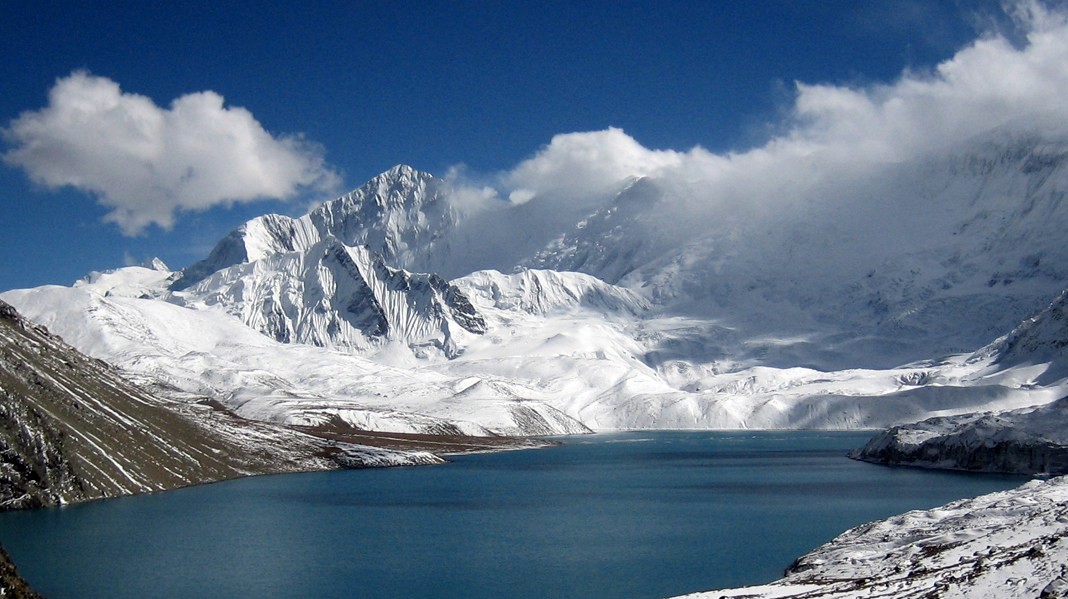
Tilicho Peak Expedition is an awe-inspiring mountaineering journey that tests climbers' skills, endurance, and determination. It offers the opportunity to conquer a challenging Himalayan peak, revel in breathtaking landscapes, and experience the sheer grandeur of the mountains. However, undertaking this expedition requires thorough preparation, proper training, and adherence to safety measures to ensure a safe and successful ascent.
History of Tilicho Peak Expedition
The Tilicho Peak Expedition has a rich history that traces back to the mid-20th century when explorers and mountaineers began venturing into the Annapurna region of Nepal. Tilicho Peak, with its imposing presence, attracted attention as a challenging unclimbed peak. In 1978, a Japanese team successfully made the first ascent of Tilicho Peak, establishing the standard route from the northwest face. This achievement placed Tilicho Peak on the mountaineering map and inspired subsequent expeditions from around the world. Over the years, climbers have tackled the peak's technical challenges, including steep slopes, icy sections, and rocky terrain. The Tilicho Peak Expedition continues to entice experienced mountaineers seeking new heights. The impact of these expeditions extends beyond mountaineering, benefiting the local communities through tourism development and cultural exchange. Efforts are also underway to promote conservation and sustainability in the region. The history of the Tilicho Peak Expedition exemplifies the spirit of exploration, human achievement, and the enduring bond between mountaineering and the Annapurna region.
Highlights of the Tilicho Peak Expedition
The Tilicho Peak Expedition offers a thrilling and rewarding mountaineering experience in the breathtaking Himalayas. Here are some of the highlights of the Tilicho Peak Expedition:
- Spectacular Scenery: Breathtaking views of snow-capped peaks, alpine valleys, glaciers, and Tilicho Lake.
- Remote and Less Crowded: A secluded and less crowded climbing experience compared to other popular peaks.
- Technical Challenge: Steep ascents, icy slopes, and mixed rock and ice sections that test mountaineering skills.
- Tilicho Lake: Visit one of the highest lakes in the world, known for its stunning turquoise color.
- Cultural Immersion: Explore traditional Nepalese villages, interact with locals, and experience their hospitality.
- Personal Achievement: Summiting Tilicho Peak provides a sense of accomplishment and fulfillment.
- Sunrise and Sunset Views: The expedition provides stunning sunrise and sunset views over the Himalayan peaks, casting a golden glow and creating a magical ambiance
- Serene and Peaceful Environment: The remote and tranquil environment of the Annapurna region offers a sense of peace and serenity, providing a perfect escape from the noise and stress of daily life.
- Adventure of a Lifetime: The Tilicho Peak Expedition is an adventure of a lifetime that pushes climbers to their limits, allowing them to accomplish something extraordinary and create lifelong memories.
These highlights combine adventure, natural beauty, cultural immersion, and personal growth, making the Tilicho Peak Expedition a truly remarkable experience.
Routes for the Tilicho Peak Expedition
The Tilicho Peak Expedition offers various routes to reach the summit, each presenting its own challenges and characteristics. Here are some of the commonly used routes for the Tilicho Peak Expedition:
Northwest Face Route
The Northwest Face Route is the standard and most commonly used route for climbing Tilicho Peak. It was the route taken by the first successful ascent team in 1978. Here's an overview of the Northwest Face Route for the Tilicho Peak Expedition:
Base Camp: The expedition begins with a trek from the trailhead, usually in Besi Sahar or another starting point along the Annapurna Circuit trek. After several days of trekking through picturesque landscapes and passing through villages, the climbers reach the Tilicho Base Camp, which serves as the starting point for the ascent.
Camp 1: From the base camp, climbers establish Camp 1 at an intermediate point on the mountain. This camp serves as an acclimatization stop and allows climbers to rest and adjust to the increasing altitude. It also serves as a staging point for carrying necessary supplies and equipment to higher camps.
Camp 2: Climbers continue their ascent from Camp 1 and establish Camp 2 at a higher elevation. This camp is strategically located to facilitate the acclimatization process and prepare for the challenging sections ahead. Climbers may undergo additional acclimatization hikes and training sessions at Camp 2 to build their physical and mental endurance.
Camp 3: Moving further up the mountain, climbers establish Camp 3 at an even higher altitude. This camp is often positioned close to the base of the Northwest Face, where the technical climbing begins. At Camp 3, climbers finalize their preparations for the summit push, ensuring that they have the necessary equipment and provisions.
Summit Push: The summit push from Camp 3 involves navigating the steep slopes, ridges, and glaciers of the Northwest Face. Climbers employ mountaineering techniques such as roped travel, the use of crampons and ice axes, and negotiating crevasses. The ascent requires careful route finding and efficient movement to ensure safety and progress towards the summit.
Summit and Descent: After a demanding climb, climbers reach the summit of Tilicho Peak, where they can savor the breathtaking views of the surrounding peaks and glaciers. They spend a short amount of time celebrating their accomplishment before beginning the descent. The descent follows the same route, with climbers retracing their steps back to the base camp.
The Northwest Face Route on Tilicho Peak demands technical mountaineering skills, experience in high-altitude environments, and proper acclimatization. Climbers should be proficient in using mountaineering equipment, skilled in ropework, and knowledgeable about glacier travel techniques. Safety measures, teamwork, and adherence to weather conditions are critical throughout the expedition.
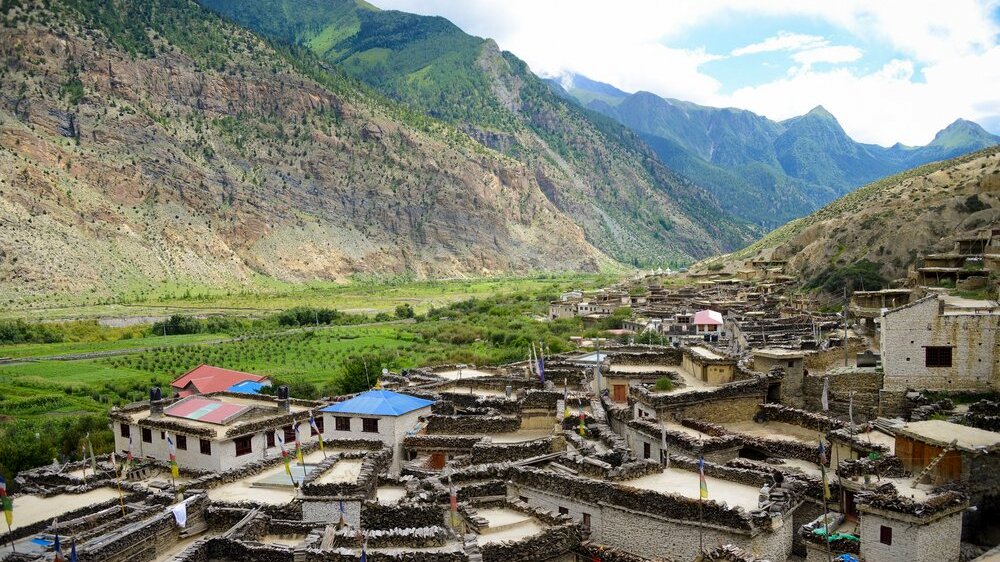
West Ridge Route
The West Ridge Route is an alternative and challenging route for climbing Tilicho Peak. Here's an overview of the West Ridge Route for the Tilicho Peak Expedition:
Base Camp: The expedition starts with a trek along the Annapurna Circuit trail to reach the Tilicho Base Camp. This camp serves as the starting point for the West Ridge Route and provides a staging area for climbers to acclimatize and prepare for the ascent.
Camp 1: From the base camp, climbers establish Camp 1 along the West Ridge. This camp is strategically positioned to allow for gradual acclimatization and provide a resting point before continuing the climb. Climbers may undertake acclimatization hikes and training exercises from Camp 1 to enhance their readiness for higher altitudes.
Camp 2: Climbers progress further up the West Ridge, establishing Camp 2 at a higher elevation. This camp serves as a launching pad for the subsequent sections of the route. Climbers may spend additional time at Camp 2 to adjust to the altitude and further refine their climbing techniques.
Technical Sections: As climbers ascend along the West Ridge, they encounter technical sections that require rock climbing skills and navigation of narrow ridges. These sections may involve traversing exposed areas and require the use of climbing equipment such as ropes, harnesses, and protective gear. Climbers must exercise caution and employ proper mountaineering techniques to negotiate these challenging segments.
Summit Push: From the higher camps along the West Ridge, climbers embark on the summit push. This involves ascending the remaining steep slopes, negotiating any remaining technical sections, and overcoming the final challenges to reach the summit of Tilicho Peak. Climbers must carefully assess weather and route conditions, as well as their own physical and mental stamina, to determine the appropriate timing for the summit push.
Summit and Descent: Upon reaching the summit, climbers are rewarded with panoramic views of the surrounding peaks and the vast Himalayan landscape. After celebrating their achievement, climbers begin their descent, retracing their steps back along the West Ridge and returning to the base camp.
The West Ridge Route on Tilicho Peak demands advanced mountaineering skills, including rock climbing proficiency, route-finding abilities, and experience in high-altitude environments. Climbers should possess knowledge of rope techniques, be comfortable with exposure, and have experience in glacier travel. Proper acclimatization and adherence to safety protocols are crucial throughout the expedition.
South Face Route
The South Face route is a more technically demanding and less frequented option for climbing Tilicho Peak. This route involves ascending the southern face of the mountain, which includes steep ice and mixed climbing sections. The South Face route requires advanced mountaineering skills and offers a more isolated and adventurous experience for climbers.
It's important to note that the choice of route depends on various factors, including the climbers' experience and preferences, the conditions on the mountain, and the guidance of experienced climbing guides. Safety considerations and the overall objective of the expedition also play a significant role in determining the route.
Whichever route is chosen, proper preparation, acclimatization, and adherence to safety protocols are crucial for a successful and safe Tilicho Peak Expedition. Engaging the services of experienced climbing guides or joining authorized expedition operators like Luxury Holiday Nepal is highly recommended to ensure a well-planned and supported journey.
Mountain views seen during the Tilicho Peak Expedition
The Tilicho Peak Expedition offers breathtaking views of the surrounding Himalayan peaks and scenic landscapes. Here are some of the stunning mountain views that climbers can expect to witness during the expedition:
Tilicho Peak: As the primary objective of the expedition, climbers will have awe-inspiring views of Tilicho Peak itself. Standing at 7,134 meters (23,405 feet), the peak dominates the skyline with its majestic presence. From various vantage points along the ascent, climbers can appreciate the beauty and grandeur of Tilicho Peak.
Annapurna Range: The Tilicho Peak Expedition takes place in the Annapurna region, offering spectacular views of the Annapurna mountain range. Peaks such as Annapurna I (8,091 meters), Annapurna II (7,937 meters), Annapurna III (7,555 meters), and Annapurna IV (7,525 meters) can be seen from different parts of the journey. The sight of these towering peaks, draped in snow and ice, creates a mesmerizing backdrop throughout the expedition.
Gangapurna: Gangapurna (7,455 meters) is another prominent peak visible during the Tilicho Peak Expedition. Located near Manang, it presents a stunning sight with its steep slopes and icy flanks. Climbers will have opportunities to admire the beauty of Gangapurna from different angles as they trek and ascend in the Annapurna region.
Manaslu: Although Manaslu (8,156 meters) is not part of the immediate Annapurna range, it can be visible from certain viewpoints during the Tilicho Peak Expedition. Situated to the east of the Annapurna region, Manaslu is the eighth-highest mountain in the world. Catching glimpses of this majestic peak adds to the panoramic mountain views and enhances the sense of awe and wonder
-1.jpg)
Dhaulagiri Range: While primarily focused on Tilicho Peak, climbers may also catch glimpses of the Dhaulagiri range. Dhaulagiri (8,167 meters) is the seventh-highest mountain globally and presents a magnificent sight with its impressive snow-capped peaks and rugged terrain. The sight of Dhaulagiri and its neighboring peaks adds to the splendor of the mountain vistas during the expedition.
Glacial Landscapes: Along the trek to Tilicho Base Camp and during the ascent, climbers will encounter stunning glacial landscapes. The sight of vast glaciers, shimmering icefalls, and frozen lakes surrounded by towering peaks creates a surreal and picturesque setting. These glacial features add to the overall beauty and drama of the mountain views.
It's important to note that weather conditions, visibility, and the specific route chosen can influence the exact mountain views experienced during the Tilicho Peak Expedition. However, the Annapurna region is renowned for its breathtaking mountain scenery, and climbers can anticipate a visual feast of majestic peaks, glacial landscapes, and the sheer immensity of the Himalayas.
How Difficult Is The Tilicho Peak Expedition
The Tilicho Peak Expedition is considered a challenging and demanding endeavor, requiring a high level of mountaineering skills, physical fitness, and mental resilience. Here are some factors that contributed to the difficulty of the Tilicho Peak Expedition:
High Altitude: Tilicho Peak stands at an elevation of 7,134 meters (23,405 feet). Climbing at such high altitudes presents numerous challenges, including reduced oxygen levels, increased risk of altitude sickness, and decreased physical performance. Proper acclimatization and gradual ascent are crucial to mitigate the effects of high altitude.
Technical Difficulty: The Tilicho Peak Expedition involves technical climbing sections that require advanced mountaineering skills. Depending on the chosen route, climbers may encounter steep slopes, rock faces, icy sections, crevasses, and other challenging terrain. Proficiency in rope techniques, ice climbing, and navigation is necessary to safely navigate these technical sections.
Weather Conditions: The weather in the Himalayas can be highly unpredictable and harsh, particularly at higher altitudes. Climbers must be prepared to face extreme cold temperatures, strong winds, and potential storms. Adverse weather conditions can impact visibility, increase the risk of avalanches, and pose additional hazards during the expedition.
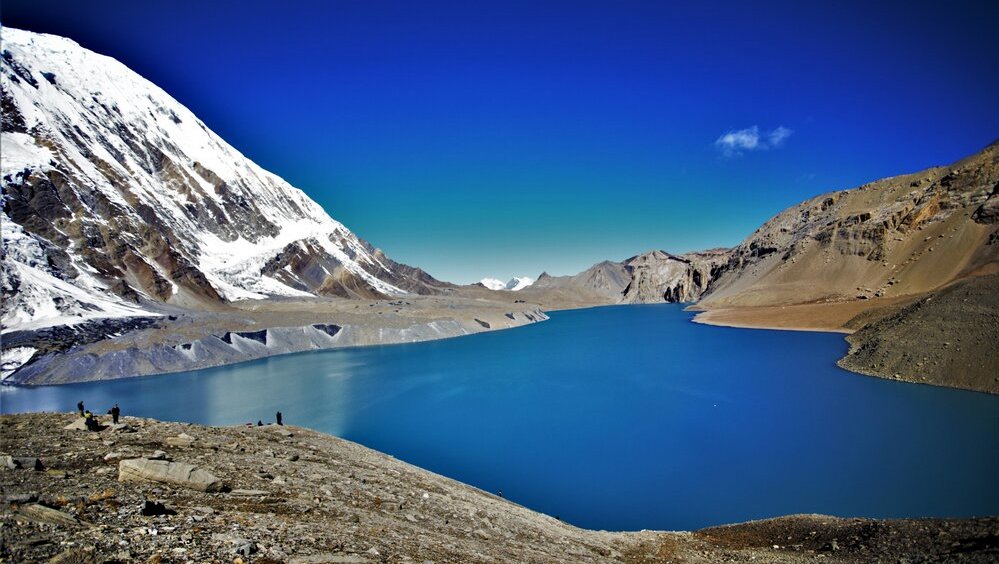
Length and Duration: The Tilicho Peak Expedition typically spans several weeks, including acclimatization periods, trekking to the base camp, establishing higher camps, and the summit push. Endurance and stamina are essential to sustain physical and mental exertion over an extended period in a challenging mountain environment.
Remote Location: The Tilicho Peak Expedition takes place in a remote region of the Annapurna range. Limited infrastructure, difficult access, and lack of immediate medical assistance pose additional challenges. Climbers must be self-sufficient, carry adequate supplies, and be prepared to handle emergencies or unexpected situations.
Technical Equipment and Logistics: The expedition requires specialized mountaineering equipment, including crampons, ice axes, harnesses, ropes, and high-altitude gear. Managing and carrying this equipment, along with provisions and personal gear, adds to the logistical complexity and physical demands of the expedition.
The difficulty of the Tilicho Peak Expedition highlights the need for thorough preparation, comprehensive training, and a deep understanding of the risks involved. It is an undertaking that demands respect for the mountain environment and a strong commitment to personal safety and the well-being of the team.
How to prepare for the Tilicho Peak Expedition
Preparing for the Tilicho Peak Expedition requires a comprehensive approach to physical and mental readiness. Firstly, focus on building your physical fitness through a regular exercise routine that includes cardiovascular exercises, strength training, and endurance-building activities. Prioritize high-altitude acclimatization by gradually exposing yourself to increased altitudes through hikes and treks. Develop and enhance your technical climbing skills by participating in mountaineering courses and practicing techniques such as rock climbing, ice climbing, and glacier travel. Cultivate mental resilience by engaging in mental exercises and adopting a positive mindset to overcome challenges. Research the expedition thoroughly, gather necessary gear and equipment, and ensure proper nutrition and hydration. Make logistical arrangements, including travel, permits, accommodations, and guides. Lastly, familiarize yourself with first aid and safety protocols, and consider consulting experienced mountaineers or expedition operators (Luxury Holiday Nepal) for personalized guidance. By following these steps, you can adequately prepare for the Tilicho Peak Expedition and increase your chances of a safe and successful climb.
Permits for the Tilicho Peak Expedition
Permits are required for the Tilicho Peak Expedition to ensure the safety of climbers and the preservation of the natural environment. Here are the permits typically required for the expedition:
Annapurna Conservation Area Permit (ACAP): The Annapurna Conservation Area is a protected region, and climbers must obtain the ACAP before entering. This permit aims to conserve the biodiversity, cultural heritage, and natural resources of the area. It can be obtained from the Nepal Tourism Board in Kathmandu or from the ACAP counter in Besisahar, the starting point of the Annapurna Circuit trek.
Restricted Area Permit (RAP): Since Tilicho Peak is located in a restricted area, climbers need to obtain a Restricted Area Permit. This permit is issued by the Department of Immigration in Kathmandu or Pokhara. It is essential to have a registered trekking agency or a qualified climbing guide to assist with obtaining the RAP.
Climbing Permit: A climbing permit specifically for Tilicho Peak is necessary to attempt the ascent. This permit is obtained from the Nepal Mountaineering Association (NMA). It requires submitting an application, paying the appropriate fee, and providing necessary documentation, including a climbing itinerary, team details, and proof of insurance.
It is important to note that permit requirements and procedures may vary, so it is advisable to check with the relevant authorities for the most up-to-date information. Additionally, climbers must adhere to the rules and regulations set forth by the permit issuing authorities, respect the local culture and environment, and follow responsible mountaineering practices during the expedition.
Best Season For Tilicho Peak Expedition
Spring Season (March to May)
During spring, the Tilicho Peak Expedition offers climbers a beautiful blend of blooming flowers, lush greenery, and favorable weather conditions. The days are generally sunny with clear skies, making for excellent visibility of the surrounding peaks. The temperatures gradually become milder as the season progresses, providing comfortable climbing conditions. However, early in the season, climbers may encounter lingering snow and ice at higher altitudes, requiring proper equipment and skills. Spring is a popular time for the expedition, so expect a moderate level of traffic on the trails and at base camps.
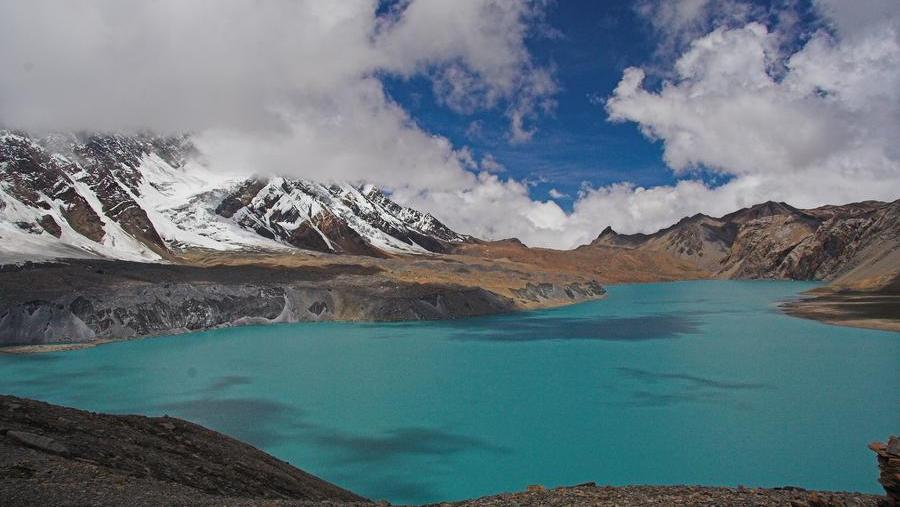
Lower Altitudes (Base Camp): Daytime temperatures at lower altitudes during spring can range from 10°C (50°F) to 20°C (68°F). Nighttime temperatures can drop to around -5°C (23°F) to 5°C (41°F).
Higher Altitudes (High Camp): As you ascend to higher altitudes, temperatures become colder. Daytime temperatures at the high camp can range from -5°C (23°F) to 5°C (41°F), and nighttime temperatures can drop significantly to -10°C (14°F) or lower.
Summer Season (June to August)
The summer season in the Tilicho Peak region brings warmer temperatures and the monsoon season. This period is characterized by increased rainfall, high humidity, and occasional cloud cover. The trails can become muddy and slippery, making the ascent more challenging. Thunderstorms and heavy rainfall are common, which can limit visibility and increase the risk of landslides. Due to these factors, the summer season is generally not recommended for the Tilicho Peak Expedition, as the weather conditions and safety risks make climbing difficult.
Lower Altitudes (Base Camp): Summer temperatures at lower altitudes can range from 15°C (59°F) to 25°C (77°F) during the day. Nighttime temperatures usually range from 5°C (41°F) to 15°C (59°F).
Higher Altitudes (High Camp): Temperatures at the high camp during summer can vary depending on specific weather conditions. Daytime temperatures can range from -5°C (23°F) to 10°C (50°F), while nighttime temperatures can drop to -10°C (14°F) or lower.
Autumn Season (September to November)
Autumn is widely regarded as the best season for the Tilicho Peak Expedition. The weather during this time is typically dry, with clear skies and moderate temperatures. The air is crisp, and the visibility is excellent, offering breathtaking views of the surrounding peaks and landscapes. The trails are well-maintained, making navigation relatively straightforward. However, as autumn progresses, colder temperatures and occasional snowfall may be encountered at higher elevations. Autumn is a popular season for trekking and climbing, so expect a moderate number of climbers on the routes and at base camps.
Lower Altitudes (Base Camp): In autumn, temperatures at lower altitudes are generally pleasant. Daytime temperatures can range from 10°C (50°F) to 20°C (68°F), and nighttime temperatures can drop to 0°C (32°F) to 10°C (50°F).
Higher Altitudes (High Camp): At the high camp in autumn, temperatures become colder. Daytime temperatures can range from -5°C (23°F) to 5°C (41°F), while nighttime temperatures can drop to -10°C (14°F) or lower.
Winter Season (December to February)
The winter season brings cold temperatures and snowfall to the Tilicho Peak region. The higher altitudes experience heavy snowfall, which can make climbing challenging and hazardous. Extreme cold temperatures require specialized equipment and mountaineering skills to navigate safely. Winter is not recommended for inexperienced climbers due to the increased risks associated with the harsh weather conditions and limited daylight hours. However, for experienced climbers seeking solitude and a unique adventure, winter can offer a more isolated and serene experience on the mountain.
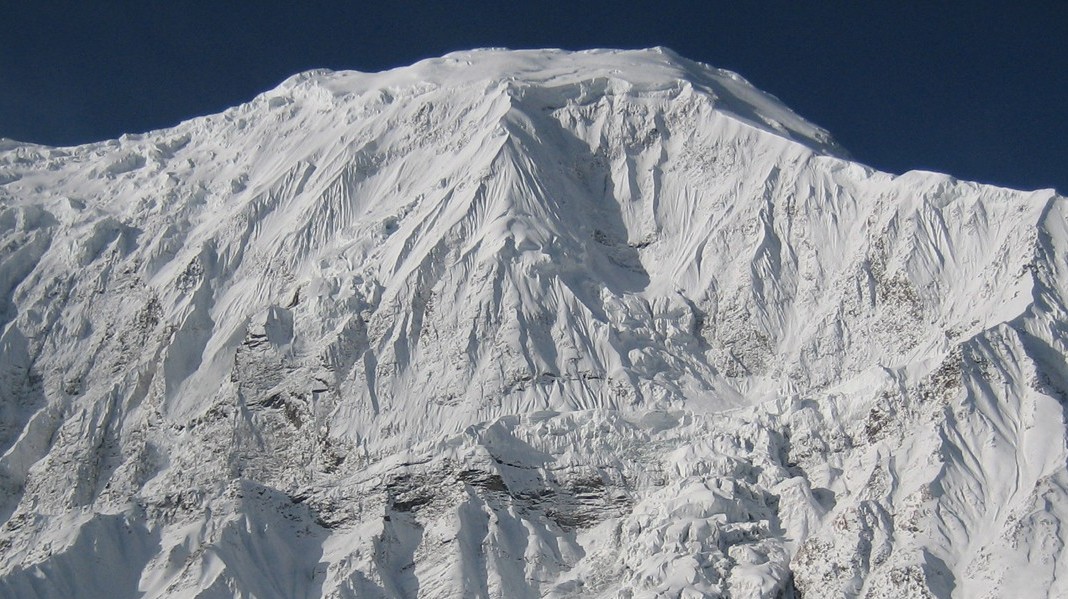
Lower Altitudes (Base Camp): During winter, temperatures at lower altitudes can range from 0°C (32°F) to 10°C (50°F) during the day. Nighttime temperatures can drop significantly, often reaching below freezing, around -10°C (14°F) to -20°C (-4°F) or lower.
Higher Altitudes (High Camp): At the high camp in winter, temperatures are extremely cold. Daytime temperatures can range from -10°C (14°F) to -5°C (23°F), and nighttime temperatures can drop even further, reaching as low as -20°C (-4°F) or colder.
It's important to note that weather patterns can vary from year to year, and conditions in the mountains can change rapidly. It is always good to get up-to-date information about the weather conditions before starting the climbing journey.
Accommodation and Meals During The Tilicho Peak Expedition
During the Tilicho Peak Expedition, accommodation and meals are typically arranged through a combination of camping and teahouse lodges along the trekking route. Here's an overview of what you can expect:
Accommodation
Teahouse Lodges: Along the trekking route to Tilicho Peak, teahouse lodges are available for overnight stays. Teahouses are basic mountain lodges that provide dormitory-style or private rooms with simple beds, blankets, and sometimes shared bathrooms. The facilities at teahouses can vary, but most offer dining areas where you can relax, socialize, and enjoy meals. Keep in mind that teahouses may have limited amenities and electricity, especially at higher altitudes.
Camping: As you ascend higher towards the base camp and high camp of Tilicho Peak, camping becomes necessary. You will need to bring your own tents, sleeping bags, and other camping equipment. Campsites are set up in designated areas, and your expedition team will handle the logistics of pitching tents, cooking, and providing support services.
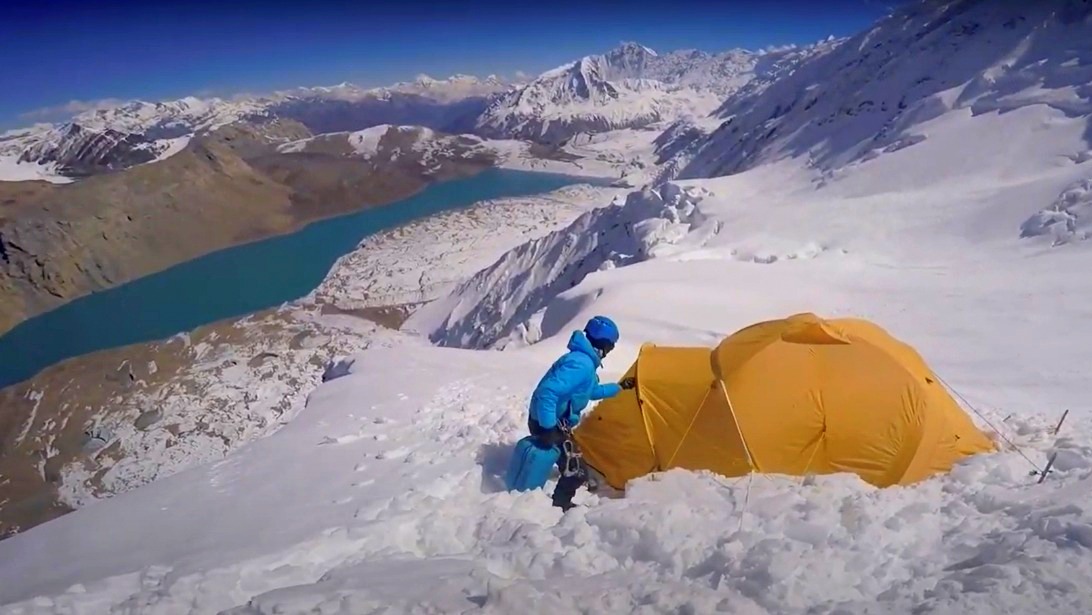
Meals
Teahouse Meals: Teahouse lodges along the trekking route usually have attached dining areas where they serve meals. These meals are typically simple and cater to trekkers' and climbers' nutritional needs. The menu options at teahouses include a variety of Nepali and international dishes such as dal bhat (lentil soup with rice), noodles, soups, curries, pancakes, and fried rice. Teahouses also offer hot drinks like tea, coffee, and hot chocolate.
Camping Meals: During camping portions of the expedition, your support team will prepare meals for you. These meals are usually cooked by the expedition cook and can include a mix of local and international cuisine. The menu may consist of breakfast items like porridge, bread, eggs, and hot drinks. Lunch and dinner can include a combination of rice, pasta, noodles, vegetables, meat, and lentils. High-energy snacks and drinks are also provided to keep you fueled during the climb.
It's important to note that while meals are provided during the expedition, the choices may be limited and basic. Vegetarian options are commonly available, but specific dietary requirements or preferences should be communicated in advance to ensure suitable arrangements can be made.
Travel Insurance for the Tilicho Peak Expedition
Here are the key points regarding travel insurance for the Tilicho Peak Expedition:
- Ensure coverage for mountaineering activities, including high-altitude climbing.
- Confirm coverage for activities at high altitudes beyond 7,134 meters (23,405 feet).
- Include coverage for medical expenses, emergency evacuation, and rescue, trip cancellation or interruption, loss of baggage or personal belongings, and personal liability.
- Check if pre-existing medical conditions are covered.
- Verify coverage for the entire duration of the expedition and the geographical area (Nepal and specific regions).
- Understand coverage limits, deductibles, exclusions, and claim procedures by thoroughly reading the policy documents.
- Consider specialized adventure sports add-ons or mountaineering coverage.
- Seek advice from insurance experts or providers experienced in covering mountaineering expeditions.
- Assess individual needs, preferences, and risk tolerance when selecting a policy.
Remember to carefully review and compare different insurance options to find the most suitable coverage for your Tilicho Peak Expedition.
Checklist for the Tilicho Peak Expedition
Preparing for the Tilicho Peak Expedition requires careful planning and ensuring you have all the necessary equipment and supplies. Here's a checklist to help you organize and pack for the expedition:
Clothing
- Base layers (thermal tops and bottoms)
- Insulated mid-layers (fleece jackets, down jackets)
- Waterproof and windproof outer shell jacket and pants
- Insulated gloves or mittens
- Warm hat and balaclava
- Hiking socks and thermal socks
- Mountaineering boots
- Gaiters
- Sunglasses with UV protection
Equipment
- Mountaineering backpack
- Sleeping bag suitable for cold temperatures
- Sleeping pad or mattress
- Trekking poles
- Crampons
- Ice axe
- Harness
- Helmet
- Carabiners and quickdraws
- Ascenders and descenders
- Rope (if required for technical sections)
- Headlamp with extra batteries
- Personal locator beacon or satellite phone (for emergencies)
- Climbing helmet
Camping Gear
- Tent (appropriate for high-altitude conditions)
- Cooking stove and fuel
- Cookware and utensils
- Water bottles or hydration system
- Water purification tablets or filter
- Trekking towel
Safety and First Aid
- First aid kit (including altitude sickness medication)
- High-altitude medicine (consult a doctor)
- Sunscreen (high SPF)
- Lip balm with sun protection
- Insect repellent
- Blister treatment
- Personal medications
- Diamox (consult a doctor)
- Portable oxygen cylinder (if recommended by a doctor)
- Portable altitude chamber (PAC) bag (if recommended by a doctor)
Navigation and Communication
- Detailed map and compass
- GPS device or smartphone with navigation app
- Whistle
- Communication device (satellite phone, walkie-talkie, or radio)
Food and Hydration
- High-energy snacks (nuts, energy bars, chocolate)
- Electrolyte powder or tablets
- Water bottles or hydration bladder
Miscellaneous
- Cash (local currency and small denominations)
- Passport and necessary permits
- Travel insurance documents
- Trekking permits and climbing permits
- Trekking poles
- Camera or video equipment
- Extra batteries or power banks
- Travel adapters and chargers
Remember to adapt this checklist according to your specific needs, preferences, and the recommendations of your expedition team or guide. It's crucial to have proper gear, clothing, and supplies to ensure your safety, comfort, and success during the Tilicho Peak Expedition.
Tips for the Tilicho Peak Expedition
Here are some tips to help you prepare for the Tilicho Peak Expedition:
- Physical Fitness: Prioritize physical fitness and endurance training. Engage in regular cardiovascular exercises, strength training, and hiking to build stamina and strength for the demanding climb.
- Altitude Acclimatization: Proper acclimatization is crucial to mitigate the risks of altitude sickness. Plan for gradual ascent, take rest days, and drink plenty of fluids to allow your body to adjust to higher altitudes.
- Technical Skills: Develop or enhance your mountaineering skills, including glacier travel, rope management, crevasse rescue, and use of climbing equipment. Consider attending a mountaineering course or hiring a qualified guide to learn or brush up on these skills.
- Packing Essentials: Pack essential mountaineering gear, including proper clothing layers, a reliable sleeping bag, a sturdy backpack, trekking poles, crampons, ice axes, a harness, a helmet, and a first aid kit. Ensure all equipment is in good condition and fits properly.
- Proper Clothing: Dress in layers to accommodate changing weather conditions. Pack moisture-wicking base layers, insulating mid-layers, a windproof and waterproof outer shell, warm gloves, hats, and sturdy mountaineering boots with good insulation.
- Hydration and Nutrition: Stay hydrated by drinking plenty of fluids throughout the expedition. Carry water purification tablets or a filtration system. Pack high-energy snacks and meals that are lightweight and easy to prepare at high altitudes.
- Weather Awareness: Stay updated on weather conditions and forecasts for the region. Be prepared for sudden changes in weather and ensure you have the necessary gear and knowledge to handle adverse conditions.
- Safety Measures: Follow safety protocols, including using proper climbing techniques, staying roped up when required, and maintaining communication with your climbing team. Prioritize safety over summiting and be prepared to make decisions based on changing conditions.
- Mental Preparation: Prepare yourself mentally for the physical and mental challenges that come with climbing a peak like Tilicho. Maintain a positive mindset, be adaptable to changing circumstances, and practice resilience in the face of difficulties.
- Travel Insurance: Obtain comprehensive travel insurance that covers mountaineering activities, emergency medical evacuation, and trip cancellation. Verify that the policy specifically includes helicopter rescue services if needed.
- Local Support: Consider hiring experienced local guides or joining a reputable mountaineering company to provide guidance, logistical support, and local expertise throughout the expedition.
Remember that the Tilicho Peak Expedition requires careful planning, physical and mental preparation, and respect for the mountain environment. Take your time to acclimatize, enjoy the journey, and prioritize safety at all times.
FAQ (Frequently Asked Questions) for Tilicho Peak Expedition in Nepal
Q: What is the Tilicho Peak Expedition?
A: The Tilicho Peak Expedition is a challenging mountaineering expedition in Nepal, aiming to summit Tilicho Peak, which stands at an elevation of 7,134 meters (23,405 feet).
Q: How long does the Tilicho Peak Expedition take?
A: The duration of the expedition can vary, but it typically takes around 20 to 25 days. This includes trekking to the base camp, acclimatization periods, climbing the peak, and descending back.
Q: Is previous climbing experience required for the Tilicho Peak Expedition?
A: Yes, previous climbing experience and proficiency in using mountaineering equipment, such as crampons and ice axes, are highly recommended for the Tilicho Peak Expedition. It is considered a technically challenging climb.
Q: Are permits required for the Tilicho Peak Expedition?
A: Yes, permits are required for the Tilicho Peak Expedition. This includes trekking permits for the Annapurna Conservation Area and a climbing permit for Tilicho Peak. These permits can be obtained through authorized agencies or the Nepal Tourism Board.
Q: Is helicopter rescue service available for emergencies during the Tilicho Peak Expedition?
A: Yes, helicopter rescue services are available in Nepal for emergency situations during the expedition. In case of altitude sickness, injury, or other medical emergencies, a helicopter can be arranged to evacuate individuals from remote areas to a lower elevation or a medical facility.
Q: How does helicopter rescue service work?
A: In case of an emergency, your expedition team or trekking agency will coordinate with local authorities to arrange a helicopter rescue. The rescue helicopter will fly to the designated location and evacuate the affected person(s) to a suitable medical facility or a lower altitude for proper treatment.
Q: Is helicopter rescue service included in travel insurance for the Tilicho Peak Expedition?
A: The inclusion of helicopter rescue service in travel insurance varies depending on the policy and insurance provider. Some travel insurance policies offer coverage for emergency medical evacuation and rescue, including helicopter rescue. It is essential to carefully review your insurance policy and confirm the coverage details.
Q: What should I do in case of an emergency during the expedition?
A: In case of an emergency, immediately inform your expedition leader or guide. They will assess the situation and coordinate with the necessary authorities for appropriate actions, including arranging a helicopter rescue if required.
Q: Can I rely solely on helicopter rescue service for my safety during the expedition?
A: While helicopter rescue service is available, it should not be relied upon as the sole safety measure during the Tilicho Peak Expedition. Proper acclimatization, following safety protocols, having appropriate climbing gear, and being physically prepared are crucial to minimizing the risk of emergencies.
Similarly other 7000-meter peaks for Climbing and Expedition Packages in Nepal
Pumori Expedition (7,145 m)
Gangapurna Expedition (7,455 m)
Annapurna South Expedition (7,219 m)
8000-meter Mountain Expedition in Nepal
Makalu Expedition (8,463m)
Manaslu Expedition (8,163 m)
Kanchenjunga Expedition (8,586 m)
Lhotse Expedition (8,516 m)
Mt. Everest Expedition (8848.86 m)
Dhaulagiri Expedition (8,167 m)
6000-meter peaks for Climbing and Expedition in Nepal
Mt Ama Dablam Expedition (6,812 m)
Island Peak Expedition (6,160 m)
Mera Peak Climbing (6,476 m)
Chulu West Peak Climbing (6,419 m)
Pisang Peak Climbing (6,091 m)
Singu Chuli Peak Climbing (6,501 m)
If you need any further information, please contact us by email: at [email protected], Phone: at +977- 985 100 5129 (WhatsApp)
#Tags
Tripadvisor
5.0910 reviewsGoogle
4.8110 reviewsFacebook
4.1 recommend44 ReviewsTrustpilot
4.1 Great(5 reviews)- Trusted by50K plus traveller




